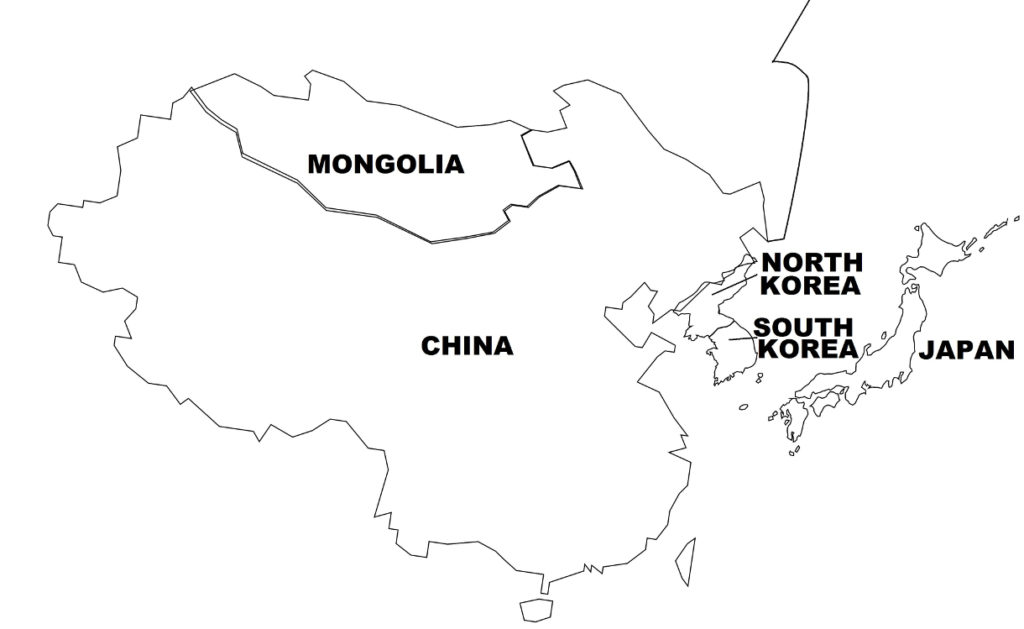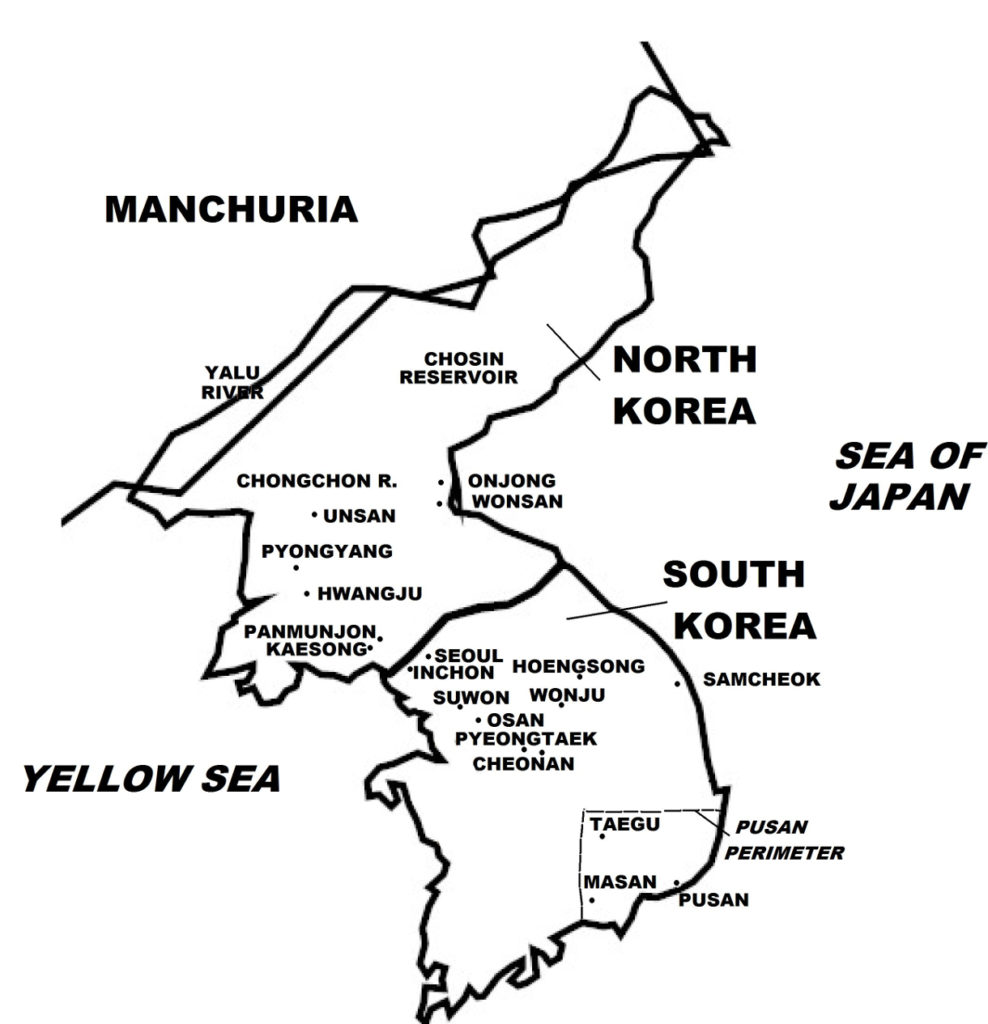
On June 29, 1950, United States President Harry S. Truman ordered a naval blockade of the Korean coastline following the start of the Korean War. At the same time, he authorized the deployment of U.S. troops to assist the beleaguered South Korean-American forces defending South Korea. The U.S. Air Force was also instructed to launch bombing raids on military targets in North Korea.
North Korea launched its invasion of South Korea four days earlier, June 25, and rapidly gained territory, pushing back the small South Korean-American defenders. The United Nations Security Council, upon the request of the United States, passed a resolution urging UN member states to come to the aid of South Korea.

(Excerpts taken from Wars of the 20th Century: Volume 5 – Twenty Wars in Asia)
Aftermath of the Korean War An armistice was signed on July 19, 1953. Eight days later, July 27, representatives of the UN Command, North Korean Army, and the Chinese People’s Volunteer Army signed the Korean Armistice Agreement, which ended the war. A ceasefire came into effect 12 hours after the agreement was signed. The Korean War was over.
War casualties included: UN forces – 450,000 soldiers killed, including over 400,000 South Korean and 33,000 American soldiers; North Korean and Chinese forces – 1 to 2 million soldiers killed (which included Chairman Mao Zedong’s son, Mao Anying). Civilian casualties were 2 million for South Korea and 3 million for North Korea. Also killed were over 600,000 North Korean refugees who had moved to South Korea. Both the North Korean and South Korean governments and their forces conducted large-scale massacres on civilians whom they suspected to be supporting their ideological rivals. In South Korea, during the early stages of the war, government forces and right-wing militias executed some 100,000 suspected communists in several massacres. North Korean forces, during their occupation of South Korea, also massacred some 500,000 civilians, mainly “counter-revolutionaries” (politicians, businessmen, clerics, academics, etc.) as well as civilians who refused to join the North Korean Army.
Under the armistice agreement, the frontline at the time of the ceasefire became the armistice line, which extended from coast to coast some 40 miles north of the 38th parallel in the east, to 20 miles south of the 38th parallel in the west, or a net territorial loss of 1,500 square miles to North Korea. Three days after the agreement was signed, both sides withdrew to a distance of two kilometers from the ceasefire line, thus creating a four-kilometer demilitarized zone (DMZ) between the opposing forces.
The armistice agreement also stipulated the repatriation of POWs, a major point of contention during the talks, where both parties compromised and agreed to the formation of an independent body, the Neutral Nations Repatriation Commission (NNRC), to implement the exchange of prisoners. The NNRC, chaired by General K.S. Thimayya from India, subsequently launched Operation Big Switch, where in August-December 1953, some 70,000 North Korean and 5,500 Chinese POWs, and 12,700 UN POWs (including 7,800 South Koreans, 3,600 Americans, and 900 British), were repatriated. Some 22,000 Chinese/North Korean POWs refused to be repatriated – the 14,000 Chinese prisoners who refused repatriation eventually moved to the Republic of China (Taiwan), where they were given civilian status. Much to the astonishment of U.S. and British authorities, 21 American and 1 British (together with 325 South Korean) POWs also refused to be repatriated, and chose to move to China. All POWs on both sides who refused to be repatriated were given 90 days to change their minds, as required under the armistice agreement.
The armistice line was conceived only as a separation of forces, and not as an international border between the two Korean states. The Korean Armistice Agreement called on the two rival Korean governments to negotiate a peaceful resolution to reunify the Korean Peninsula. In the international Geneva Conference held in April-July 1954, which aimed to achieve a political settlement to the recent war in Korea (as well as in Indochina, see First Indochina War, separate article), North Korea and South Korea, backed by their major power sponsors, each proposed a political settlement, but which was unacceptable to the other side. As a result, by the end of the Geneva Conference on June 15, 1953, no resolution was adopted, leaving the Korean issue unresolved.
Since then, the Korean Peninsula has remained divided along the 1953 armistice line, with the 248-kilometer long DMZ, which was originally meant to be a military buffer zone, becoming the de facto border between North Korea and South Korea. No peace treaty was signed, with the armistice agreement being a ceasefire only. Thus, a state of war officially continues to exist between the two Koreas. Also as stipulated by the Korean Armistice Agreement, the Neutral Nations Supervisory Commission (NNSC) was established, comprising contingents from Czechoslovakia, Poland, Sweden, and Switzerland, tasked with ensuring that no new foreign military personnel and weapons are brought into Korea.
Because of the constant state of high tension between the two Korean states, the DMZ has since remained heavily defended and is the most militarily fortified place on Earth. Situated at the armistice line in Panmunjom is the Joint Security Area, a conference center where representatives from the two Koreas hold negotiations periodically. Since the end of the Korean War, there exists the constant threat of a new war, which is exacerbated by the many incidents initiated by North Korea against South Korea. Some of these incidents include: the hijacking by a North Korean agent of a South Korean commercial airliner in December 1969; the North Korean abductions of South Korean civilians; the failed assassination attempt by North Korean commandos of South Korean President Park Chung-hee in January 1968; the sinking of a South Korean naval vessel, the ROKS Cheonon, in March 2010, which the South Korean government blamed was caused by a torpedo fired by a North Korean submarine (North Korea denied any involvement), and the discovery of a number of underground tunnels along the DMZ which South Korea has said were built by North Korea to be used as an invasion route to the south.
Furthermore, in October 2006, North Korea announced that it had detonated its first nuclear bomb, and has since stated that it possesses nuclear weapons. With North Korea aggressively pursuing its nuclear weapons capability, as evidenced by a number of nuclear tests being carried out over the years, the peninsular crisis has threatened to expand to regional and even global dimensions. Western observers also believe that North Korea has since been developing chemical and biological weapons.
North Korea and South Korea Since the end of the war, the two Koreas have pursued totally divergent paths. North Korea, a Marxist state, implemented a centrally planned policy, nationalized industries, lands, and properties, and collectivized agriculture. During the Japanese occupation of the Korean Peninsula, industrialization (and thus also wealth and power) was concentrated in the north. Following the Korean War, North Korea focused on heavy industrialization, particularly power-generating, mineral, and chemical industries, which was helped greatly by large technical and financial assistance from the Soviet Union, China, and other Eastern Bloc countries. It was also determined to achieve juche (self-reliance). Simultaneously, North Korea funneled a large share of its national budget to building a large Army. To fund both its large industrial and military programs, the government borrowed heavily from foreign sources. But after the 1973 global oil crisis, the price of minerals fell in the world market, negatively affecting North Korea which was unable to pay its large foreign debt. By the mid-1980s, it failed to meet most of its debt repayment obligations, and defaulted.
By the late 1980s, socialism was waning across eastern and central Europe, with Eastern Bloc countries shedding off Marxism-Leninism and centrally planned economies, and adopting Western-style democracy and a free market system. In December 1991, the Soviet Union disintegrated. North Korea, suddenly without Soviet financial support, went into an economic freefall. Also in the 1990s, widespread famine in North Korea caused by various factors, including failed government policies, massive flooding in 1995-1996, a drought in 1997, and the loss of Soviet support, led to mass starvation. The number of deaths from the famine is estimated at between 500,000 and 2 million people, even up to 3 million. The international community responded to the calamity, and North Korea received food and other humanitarian aid from the UN, China, South Korea, the United States, and other countries. At present, North Korea, when measured in terms of its Gross Domestic Product (GDP), ranks among the poorest and least developed countries in the world.
By contrast, South Korea, which pursued Western-style democracy and a free market economy, initially suffered from severe political, social, and economic difficulties in the years following the Korean War. The country, which traditionally had an impoverished agricultural economy, was nearly exclusively dependent on U.S. financial aid (up to 90%). In October 1953, South Korea and the United States signed a Mutual Defense Treaty.
In May 1961, General Park Chung-hee came to power in South Korea through a military coup. Soon becoming president, Park began the dramatic economic transformation of South Korea. Within a few decades, the country had become a regional and global economic powerhouse, its rapid growth being called the “Miracle on the Han River” (referring to the Han River, which flows through Seoul).
Because of the prevailing unstable security climate, President Park imposed authoritarian rule and a one-party state system. His regime suppressed political opposition, censored the press, and committed grave human rights violations. But at the same time, his government initiated large-scale modernization and export-centered industrialization. Succeeding national administrations (after President Park was assassinated in 1979) have continued the country’s economic growth. By the 1990s, South Korea had become one of Asia’s business and commercial centers, boasting a highly developed economy. South Korea has since become the world’s 12th large economy, with a GDP that is nearly forty times greater than that of North Korea.
